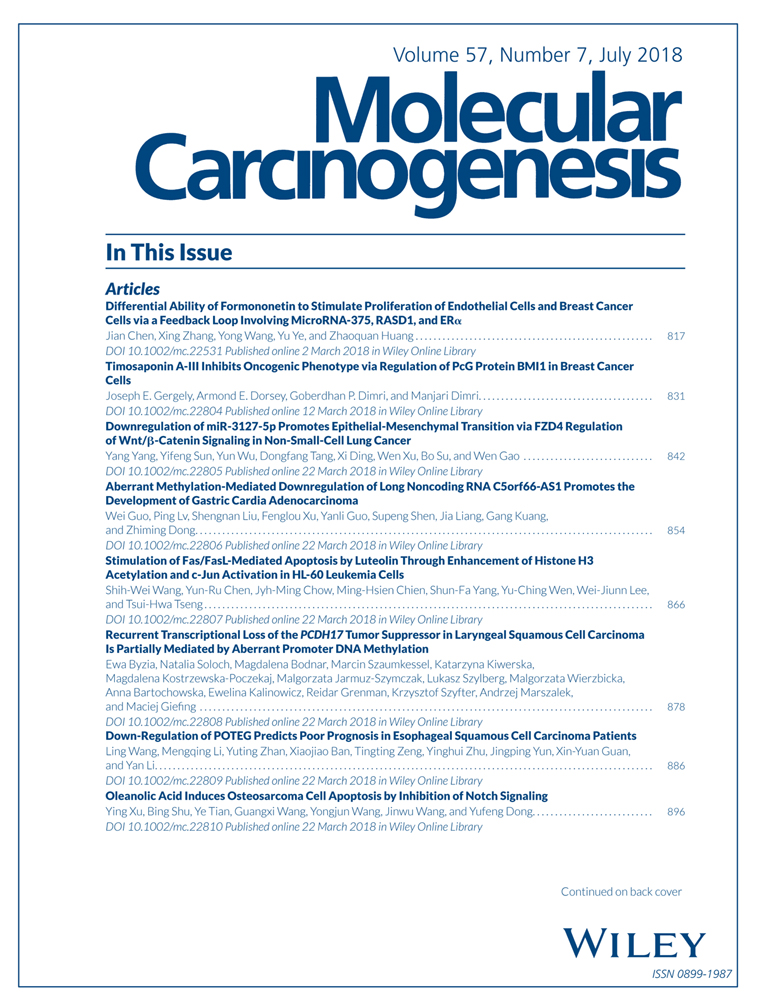Oleanolic acid induces osteosarcoma cell apoptosis by inhibition of Notch signaling
Abstract
Oleanolic acid (OA), a naturally occurring triterpenoid, exhibits potential antitumor activity in several tumor cell lines. Although the inhibition effects of OA on proliferation and survival in human cancers have been confirmed, the potential mechanism underlying OA-induced osteosarcoma cell death has not yet been fully elucidated. Our results in this study showed that OA inhibits proliferation and viability of osteosarcoma cells in a dose-dependent manner. Flow cytometry assays revealed that apoptosis in osteosarcoma cells was significantly induced by OA treatment, while this induction was blocked by Jagged1-mediated activation of Notch signaling. Western blot analysis and a mitochondrial membrane potential assay demonstrated that OA functions through the mitochondrial apoptosis pathway. More importantly, our data revealed that OA treatment interrupted the balance between pro-apoptotic factors and anti-apoptotic factors in osteosarcoma cells by inhibition of the Notch signaling pathway. These data suggest that OA induces osteosarcoma cell apoptosis by targeting mitochondria in a Notch signaling-dependent manner. Thus, OA may be a promising drug for adjuvant chemotherapy in osteosarcoma.
CONFLICTS OF INTEREST
The authors declare that there is no potential conflicts of interest.




